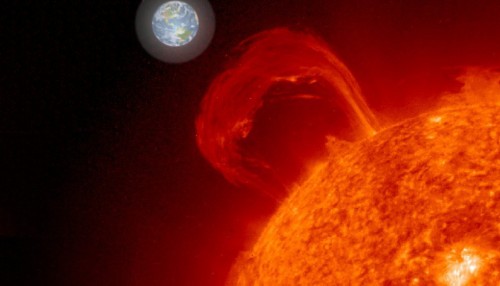By combining observations from the ground and from space, the team was able to spot a plume of low-energy plasma particles hitching a ride on the magnetic field lines emanating from the lower atmosphere to a point tens of thousands of kilometers above the ground

Scientists have discovered a plasma plume that naturally protects the Earth from solar storms. The Earth's magnetic field, or magnetosphere, stretches from the planet into space where it meets the solar wind - a stream of charged particles emitted from the Sun.
In most of its parts, the magnetosphere acts as a shield for the earth against the energetic activity of the sun. However, when this field comes into contact with the Sun's magnetic field - a process known as magnetic reconnection - strong electric currents from the Sun can reach the Earth's atmosphere, creating geomagnetic storms and 'space weather' events that can affect aircraft flying at high altitudes. As well as the astronauts on the International Space Station. Now the scientists have identified a process occurring in the Earth's magnetosphere that strengthens its protective capacity and keeps this energy away from entering the atmosphere."
Using a combination of observations from the ground and space, the team members were able to spot a plume of low-energy plasma particles hitching a ride on the magnetic field lines emanating from the lower atmosphere to a point tens of thousands of kilometers above the ground, where the Earth's magnetic field connects with that of the Sun. In this area, which the scientists call the "fusion point", the presence of cold and dense plasma slows down the magnetic reconnection, and distances the sun's effects on the Earth.
"Earth's magnetic field shields life on the surface from the full impact of these solar flares," says John Foster, deputy director of MIT's Haystack Observatory. “The reconnection bands tear layers from our magnetic shield and allow energy to leak in, bringing us large and violent storms. These plasma particles are pushed into space and slow down the coalescence process, so the overall impact of the sun on Earth is less violent."
Foster and his colleagues published the study in this week's issue of Science
to the notice of the researchers
